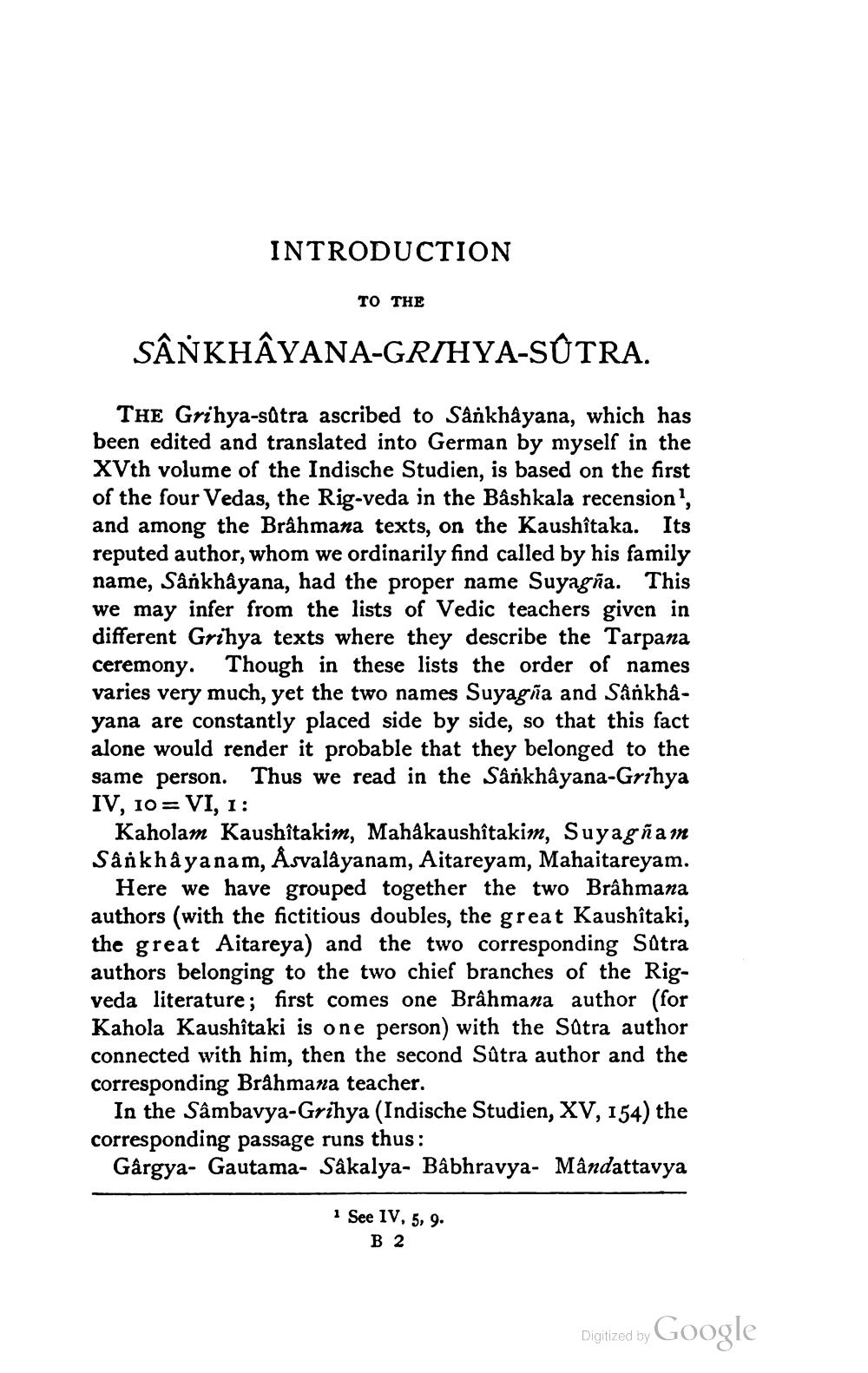________________
INTRODUCTION
TO THE
SÂŃKHÂYANA-GR/HYA-SÛTRA.
THE Grihya-sûtra ascribed to Sânkhâyana, which has been edited and translated into German by myself in the XVth volume of the Indische Studien, is based on the first of the four Vedas, the Rig-veda in the Bâshkala recension1, and among the Brahmana texts, on the Kaushîtaka. Its reputed author, whom we ordinarily find called by his family name, Sânkhâyana, had the proper name Suyagña. This we may infer from the lists of Vedic teachers given in different Grihya texts where they describe the Tarpana ceremony. Though in these lists the order of names varies very much, yet the two names Suyagña and Sânkhâyana are constantly placed side by side, so that this fact alone would render it probable that they belonged to the same person. Thus we read in the Sânkhâyana-Grihya IV, 10 = =VI, 1:
Kaholam Kaushitakim, Mahâkaushîtakim, Suyagñam Sân khâyanam, Åsvalâyanam, Aitareyam, Mahaitareyam.
Here we have grouped together the two Brahmana authors (with the fictitious doubles, the great Kaushîtaki, the great Aitareya) and the two corresponding Sutra authors belonging to the two chief branches of the Rigveda literature; first comes one Brâhmana author (for Kahola Kaushitaki is one person) with the Sûtra author connected with him, then the second Sûtra author and the corresponding Brahmana teacher.
In the Sâmbavya-Grihya (Indische Studien, XV, 154) the corresponding passage runs thus: Gârgya- Gautama- Sâkalya- Bâbhravya- Mândattavya
1 See IV, 5, 9.
B 2
Digitized by Google




